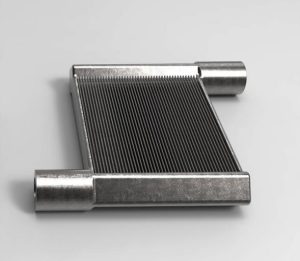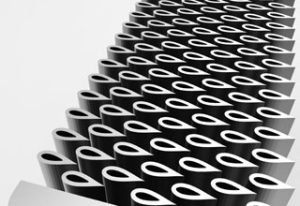Additive manufacturing and metal direct 3D printing is growing fast in the manufacturing, and being also employed and tested for next generation heat exchangers. The University of Maryland is indeed developing heat exchangers produced using metal direct 3D printing to make lighter, cheaper and more efficient exchangers, achieving increased thermal transfer by 20% in heating and cooling applications.
Another great advantage of additive manufacturing is the possibility to design more efficient and complex designs, and quickly, reducing the manufacturing process from months to weeks. Leveraging on automated design algorithms is possibile to create unique shapes, aimed to increase surface thermal exchange boosting the thermal efficiency. In addition, the components are printed in a single-piece, avoiding secondary finishing processes and brazing, so that resistance to high-pressure and leakage can be strongly improved.
The goal is also to minimize the size and weight of heat exchangers, and saving on material waste in comparison to traditional manufacturing methods. That is also due to the possibility to realize extremely thin material thickness, building leak-tight exchanger walls as thin as 200 micrometers. The one-part design and additive manufacturing also ensure greater reliability combined with predictable and repeatable print quality, also for complex and unusual geometries, allowing to produce all types of parts using titanium, stainless steel and nickel super alloy.
The miniaturized air-to-refrigerant heat exchangers produced by now are intended for HVAC and refrigeration applications, for commercial and residential air-conditioning or heat pumps systems, but they pave the way for industrial versions as well. Researchers are currently developing a 10 kW prototype, to be tested in a three-ton heat pump, aiming if all goes well for commercial production within the next 4 to 5 years.


